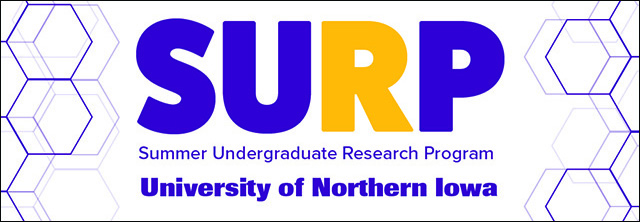
2021 Summer Undergraduate Research Program (SURP) Symposium
Location
Ballroom, Maucker Student Union, University of Northern Iowa
Presentation Type
Poster Presentation (UNI Access Only)
Document Type
poster
Keywords
Saccharomyces cerevisiae--Genetics; Genetic engineering;
Abstract
The purpose of this research project was to analyze differences at the BLM10 locus between Saccharomyces cerevisiae strains on a genomic and protein level, as well as to develop new yeast strains of varying DNA lengths at this locus. DNA first had to be extracted using an E.Z.N.A. Fungal DNA Mini kit. The DNA was amplified through the process of a Polymerase Chain Reaction (PCR) using a variety of primers and purified using the GeneJET PCR Purification Kit. The PCR samples were run on a 2% agarose gel and imaged to verify the presence of DNA fragments of the expected sizes. Sonication was used to lyse the cells and extract the protein, which was run on a protein gel and stained with Coomassie. Western blotting was also used to analyze the specific protein from the cells. Yeast cells were grown on Yeast extract/Peptone/Dextrose (YPD) agar plates. Competent yeast cells went through DNA transformation and were replica plated onto G418 sulfate plates to determine which colonies were transformation candidates. These candidates further underwent genomic DNA extraction, PCR, and agarose gel electrophoresis to verify if the transformations were successful.
Start Date
30-7-2021 11:30 AM
End Date
30-7-2021 1:15 PM
Event Host
Summer Undergraduate Research Program, University of Northern Iowa
Faculty Advisor
Justin P. Peters
Department
Department of Chemistry and Biochemistry
Copyright
©2021 Caitlyn Nuehring and Justin P. Peters
File Format
application/pdf
Recommended Citation
Nuehring, Caitlyn and Peters, Justin P. Ph.D., "Developing New Yeast Strains to Investigate Gene Looping" (2021). Summer Undergraduate Research Program (SURP) Symposium. 15.
https://scholarworks.uni.edu/surp/2021/all/15
Developing New Yeast Strains to Investigate Gene Looping
Ballroom, Maucker Student Union, University of Northern Iowa
The purpose of this research project was to analyze differences at the BLM10 locus between Saccharomyces cerevisiae strains on a genomic and protein level, as well as to develop new yeast strains of varying DNA lengths at this locus. DNA first had to be extracted using an E.Z.N.A. Fungal DNA Mini kit. The DNA was amplified through the process of a Polymerase Chain Reaction (PCR) using a variety of primers and purified using the GeneJET PCR Purification Kit. The PCR samples were run on a 2% agarose gel and imaged to verify the presence of DNA fragments of the expected sizes. Sonication was used to lyse the cells and extract the protein, which was run on a protein gel and stained with Coomassie. Western blotting was also used to analyze the specific protein from the cells. Yeast cells were grown on Yeast extract/Peptone/Dextrose (YPD) agar plates. Competent yeast cells went through DNA transformation and were replica plated onto G418 sulfate plates to determine which colonies were transformation candidates. These candidates further underwent genomic DNA extraction, PCR, and agarose gel electrophoresis to verify if the transformations were successful.


